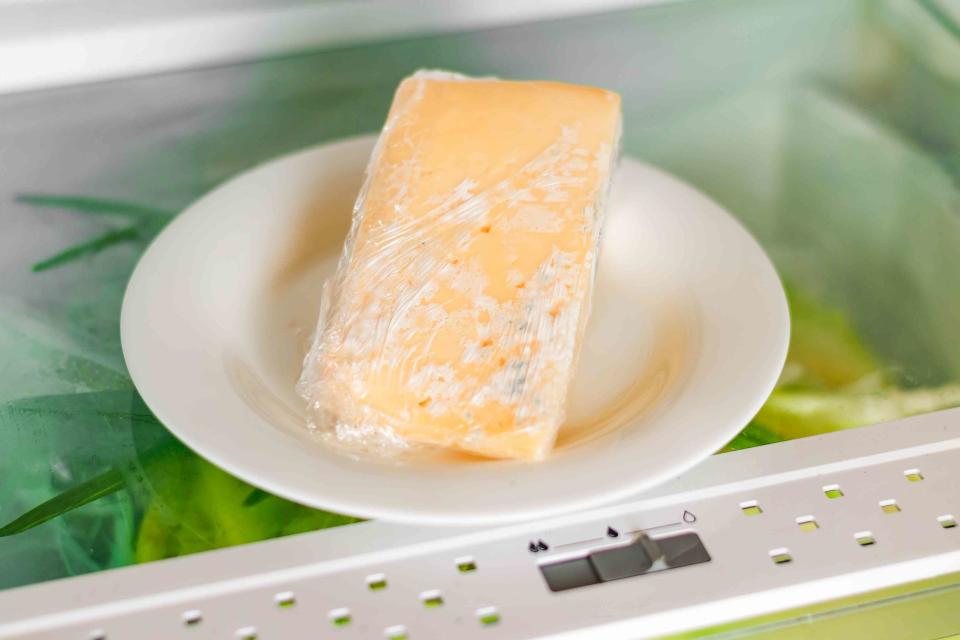Some cheese can withstand mold; some cannot.


Simply Recipes / Adobe Stock
Sometimes we go through cheese so quickly that blocks of it barely last a couple of days. But occasionally I find a package in the back of the refrigerator bin where something fuzzy has taken over. I’m never sure if it’s okay to just cut off the bad bits or if I should throw away all the cheese. So I turned to some experts for advice.
Molds are microorganisms that generally need oxygen in order to thrive. “The main cause of moldy growth on the surface of cheese is availability of oxygen and moisture on the surface,” says Prateek Sharma, Ph.D., associate professor at Utah State University and a member of the Institute of Food Technologist’s Dairy Foods Division.
But mold isn’t always a problem. “Some cheeses such as blue cheese and Camembert, are made by adding molds. The mold in these cheeses is edible and doesn’t pose a health risk.”
Can You Cut Off the Moldy Part and Still Eat the Cheese?
With hard cheeses like Parmesan or semi-hard cheeses like cheddar, you can cut off the mold and eat the rest, says Chad Galer, Vice President of Product Innovation and Food Safety at Dairy Management Inc.
“Make sure to cut at least one inch away from the mold and don’t let the knife touch the mold to help prevent further contamination,” Galer says. “This is for small spots of mold. If most of the block of cheese is covered, it should be thrown away.”
The United States Department of Agriculture (USDA) concurs that you should cut off at least an extra inch around the mold spot in a hard cheese, and the rest should be safe to eat. Mold can spread quickly through soft cheeses, though, so if your cream cheese or cottage cheese shows mold, discard the whole container.
Primarily for the purposes of quality, Sharma is a bit more aggressive, throwing away most any type of cheese that has turned moldy. “Mold can produce some compounds which may penetrate through to the interior of the cheese, causing health or quality concerns. Therefore, it is always a good practice to dispose of a cheese with mold growth,” he says.
“Most of the time, molds present in the cheese environment do not pose a significant health risk, but they may alter the body, texture, and flavor of the cheese.”
No matter what kind of cheese you have—a variety that is supposed to have mold or a variety that isn’t—never eat cheese that has a dark gray or black mold on it. This is likely Aspergillus niger, a mold that can produce toxins that can make people ill, says Sharma.
How To Keep Cheese From Getting Moldy
Oxygen is the enemy, so smart storage is key to keeping cheese from developing mold. “Wrap the cheese in wax paper or foil to protect it and help prevent mold growth,” suggests Galer. “Vacuum sealing is another option. Mold needs oxygen to grow, so vacuum sealing can help cheese last even longer.”
Read the original article on Simply Recipes.



